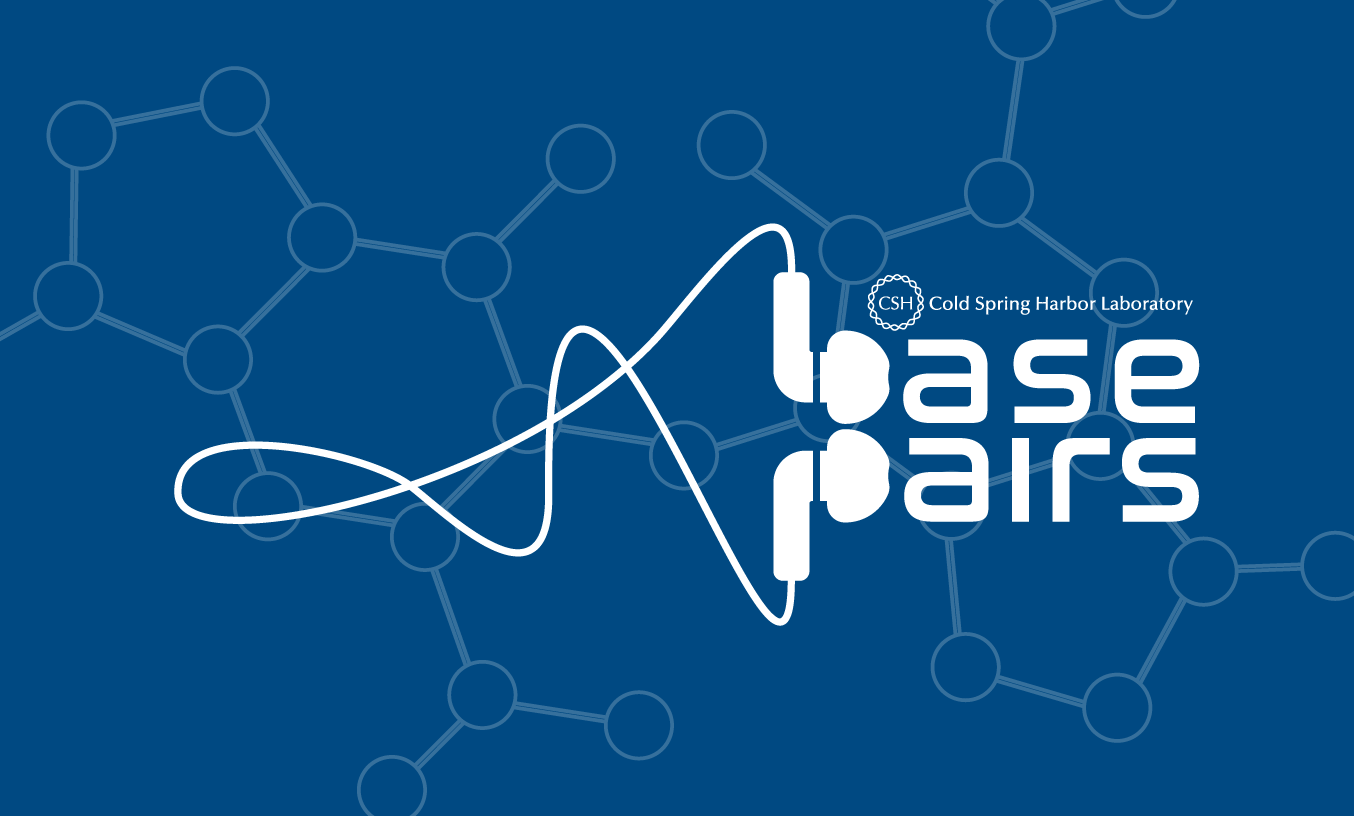Base Pairs podcast
Cold Spring Harbor Laboratory’s Base Pairs has set out to be a podcast about the power of genetic information. But why did we pick that subject? Why did we pick that name? In this short bonus episode, co-hosts Andrea and Brian explain what DNA “base pairs” are and the significance of the molecular miracle behind them.
BS: And I’m Brian
AA: A little while back, we asked you, our fans and friends, to vote on what the name of this podcast should be.
BS: Hundreds of you voted, and at the end, the name Base Pairs came out on top.
AA: But we realized that at least some of our listeners are probably wondering about that name.
BS: Yeah… “Base Pairs” does take a little explaining… so that’s why we’re here talking to you now.
BS: Base pairs are molecules.
AA: End of explanation.
BS: Yeah, that’s all we wanted to tell you.
AA: Seriously though, base pairs are way more than just a bunch of molecules. They are the paired molecules that make up DNA and allow it to serve as coded instructions for the cell, kind of like how binary code provides the instructions for computers.
BS: Except it’s more like a quaternary code – can you believe that’s a real word? What a word.
AA: True, it’s a good one. But yeah, there are these four chemical bases—you’ve probably seen them represented with the letters A, T, C, and G—and they make up the fundamental “language” of inheritance.
BS: The instructions a cell needs to function properly are spelled out in the sequence of long strands of these bases.
AA: In DNA, these strands get paired off. Each base is drawn to another, always the same way –
BS: C, Cytosine, always pairs with G, guanine; A, adenine, pairs with T, thymine. So the base pairs that form are C-G and A-T. Combinations of these pairs, all the way across the genome.
AA: And the result is that spiral-staircase-like double-helix structure James Watson and Francis Crick discovered one February morning in 1953.
BS: It’s absolutely amazing that so much of the complexity of life can be distilled into a simple language with only four letters.
AA: And that’s a big part of what we aspire to on this podcast: to distill the fascinating but complex research that goes on at Cold Spring Harbor Lab into more simple language. Not dumbed down—just streamlined.
BS: Yeah, because for many of us, scientific jargon really might as well be another language. We want to overcome that language barrier to bring you great science stories.
AA: And we invite you, dear listeners, to let us know how we’re doing by commenting on our blog, at labdish.cshl.edu. There, you’ll also find a great video from our DNA Learning Center of James Watson explaining how tin models of the base aided the discovery of DNA’s double helix structure.
BS: This is Base Pairs: stories about the power of genetic information… the monthly podcast coming to you from Cold Spring Harbor Laboratory. Stay tuned for more science stories.
Extra for bonus episode
From CSHL’s DNA Learning Center:
Written by: Brian Stallard, Content Developer/Communicator | publicaffairs@cshl.edu | 516-367-8455
